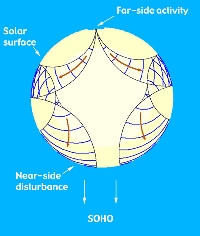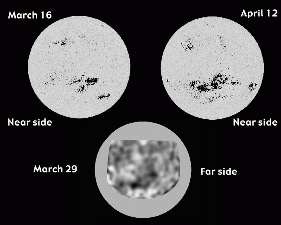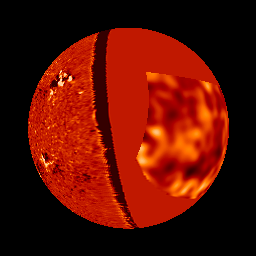
Active regions on the sun are the sites of spectacular explosive events, including solar flares, and coronal mass ejections, which are associated with eruptions of plasma. The radiation and plasma from these events sweep past the earth and can disrupt spacecraft, radio communications and power systems. Scientists watch closely for these eruptions because modern systems are increasingly sensitive to solar disturbances. But we can still be taken by surprise as the sun rotates, bringing hidden active regions into view. For example, an active region can emerge from the interior of the Sun to a place on the surface facing away from us. Two weeks later, the rotation of the Sun will bring the active region around until it faces us. At that time, we are vulnerable to eruptions of flares and coronal mass ejections.
To locate these regions in advance, scientists developed a technique of using waves on the sun's surface to make images of the far surface of the. Sun. They use the sound waves that come from the far side of the Sun (facing away from the Earth) and reach the near side (facing the earth) after bouncing once from the solar surface.
Using observations of the Sun taken with the SOHO satellite, scientists were able to make images of the far side of the Sun. The image below shows three views of an active region as the spinning of the Sun carried it from the near side to the far side and back again.

